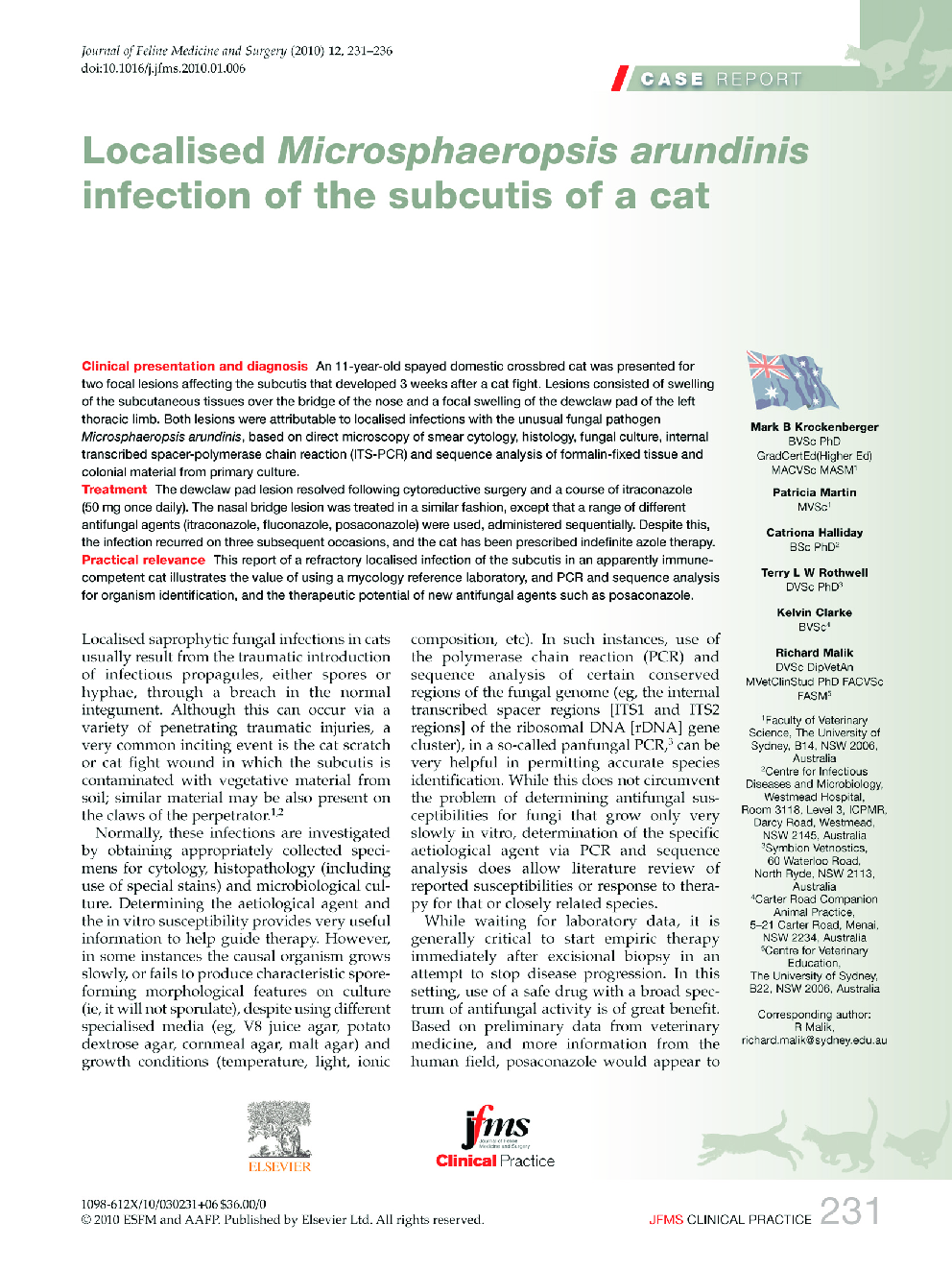| Article ID | Journal | Published Year | Pages | File Type |
|---|---|---|---|---|
| 2398041 | Journal of Feline Medicine & Surgery | 2010 | 6 Pages |
Clinical presentation and diagnosisAn 11-year-old spayed domestic crossbred cat was presented for two focal lesions affecting the subcutis that developed 3 weeks after a cat fight. Lesions consisted of swelling of the subcutaneous tissues over the bridge of the nose and a focal swelling of the dewclaw pad of the left thoracic limb. Both lesions were attributable to localised infections with the unusual fungal pathogen Microsphaeropsis arundinis, based on direct microscopy of smear cytology, histology, fungal culture, internal transcribed spacer-polymerase chain reaction (ITS-PCR) and sequence analysis of formalin-fixed tissue and colonial material from primary culture.TreatmentThe dewclaw pad lesion resolved following cytoreductive surgery and a course of itraconazole (50 mg once daily). The nasal bridge lesion was treated in a similar fashion, except that a range of different antifungal agents (itraconazole, fluconazole, posaconazole) were used, administered sequentially. Despite this, the infection recurred on three subsequent occasions, and the cat has been prescribed indefinite azole therapy.Practical relevanceThis report of a refractory localised infection of the subcutis in an apparently immune-competent cat illustrates the value of using a mycology reference laboratory, and PCR and sequence analysis for organism identification, and the therapeutic potential of new antifungal agents such as posaconazole.
